#Finalwork
Explore tagged Tumblr posts
Audio
Pure.Data and Prototype.Distortion
0 notes
Text
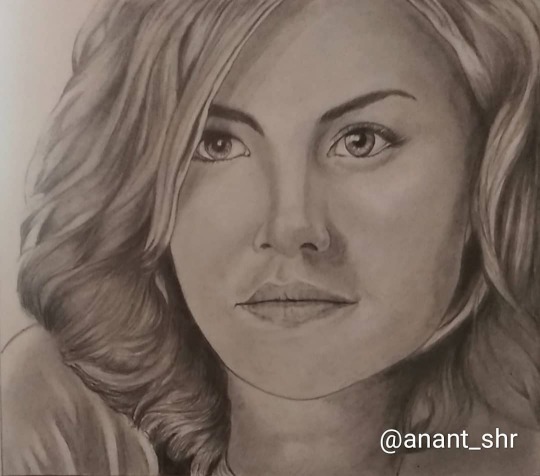
girl final portrait sketch by me ( anant mohan sharma)
see the previous sketch by me and enojy it. thanks
#art#finalwork#artrealism#artrealistic#artwork#artofinstagram#artgallery#artoftheday#arte#realisticdrawing#realism#fineart#portrait#portfolio#artists#beautifulgirls#dailypost#sketching#sketchbook#creative#creator#drawing#portraitdrawing#illustration#illustrationartists#illustrator#pencildrawing#pencil#pencilsketches#workhard
1 note
·
View note
Text

#Drinny 2019 🤓 aunque he perdido un poco la práctica y tiene detalles estéticos 🥰 this is my #ship 🙃 and i will sink with it! 🚢 🤓
¡Qué el Drinny no muera! ❤️ ¡Qué no muera nunca!
#drinny#draco x ginny#draco malfoy#ginny weasley#dmgw#drinny4ever#muminsarita#drinny4life#fanart#finalwork#dranny#best ship ever#drinny2019
37 notes
·
View notes
Photo

Hel is finally finished. First image this year I actually completed, even though it took me a fair while to do. #art #illustration #illustrator #illustrationartists #illustratorsoninstagram #painting #watercolour #watercolor #watercolourpaint #watercolorpainting #finalwork #Hel #Hella #goddessofdeath #norse #norsemyth #norsemythology #mythology #fantasy #fantasyart #fantasyillustration #myth #mythillustration https://www.instagram.com/p/B7BmAWrjyti/?igshid=8rz8dt5obr92
#art#illustration#illustrator#illustrationartists#illustratorsoninstagram#painting#watercolour#watercolor#watercolourpaint#watercolorpainting#finalwork#hel#hella#goddessofdeath#norse#norsemyth#norsemythology#mythology#fantasy#fantasyart#fantasyillustration#myth#mythillustration
2 notes
·
View notes
Photo



Final Major Work ~
assessment 2
3 notes
·
View notes
Text
Concept Statement
Glacial Glitch, 2018
Oil on Canvas, video, projector.
July 2018 I visited Alaska, visiting glaciers in Juneau, Skagway and along the Tracey Arm Fjord. Their sights weren’t only breathtaking but inspiring. Researching into the glaciers I found that they are facing massive retreats, losing meters and meters of ice a year all as a result of global warming. The negative repercussions of this loss of glacial ice means there will be detrimental to both society and the environment. Rises in sea levels will lead to flooding of coastal homes, the loss of glacial runoff will cut off clean water supplies for rural communities and the globe will be at a loss of a spectacular ruin of the ice age.
The organic and synthetic are intrinsically connected to each other. We could not have the synthetic without the organic existing before it. When looking at the two binaries it is important to realise that they are not distinct from each other but correlate. The synthetic is an adaption of the organic often to enhance qualities of the organic. Through my work Glacial Glitch I aim to analyse and question the potential impact synthetic forces would have on organic structures such as glaciers. Could they potentially preserve the environmental ruins? Synthetic recreations of environments are seen all over the world, creating virtual spaces of both man-made and environmental structures. Las Vegas exhibit an indoor Venice and Disney Lands Epcot showcase a series of different cultured lands. Would it not be possible to recreate glacial landscapes in order to preserve their aesthetic qualities to promote tourism? Or is there the potential that synthetic devices could be put in place to preserve segments of glaciers?
My work encompasses an oil painting of Mead Glacier, adapted from a photograph I took when I hiked along the glacier. Additionally a video work of the same photo but glitched is projected onto the painting. I worked with both the mediums separately at first in my experiments, testing out ideas and different mediums, however, I felt that combining the two together would make for a cohesive, resolved work that would successfully convey my ideas. The two components together question the relationship the synthetic has over the organic, and how there are un-engaged possibilities that the synthetic could have over preserving the organic. It additionally looks at synthetic reproductions and in reverse organic reproductions related both to materiality and conceptuality.
The process of my work involved with manipulating a photograph I took of Mead Glacier. I went into photoshop and edited the image to illustrate a painterly quality that I could translate into my oil painting. I primed my canvas, painted an underlayer in acrylic and then added multiple oil layers to resolve my painting. For my glitched video, I used the same photograph, editing different layers with distortion filters and playing it in a timeline setting on photoshop. It is then that I exported it to be displayed on the painting using a projector. I researched many different artists, first looking at artists who played with different mediums that deteriorated over time however moved on from this idea and looked at youtube artists who manipulated photographs and heavily looked into research of glaciers around the world to help inform my work.
1 note
·
View note
Text
STATEMENT & WORKS
video work here!
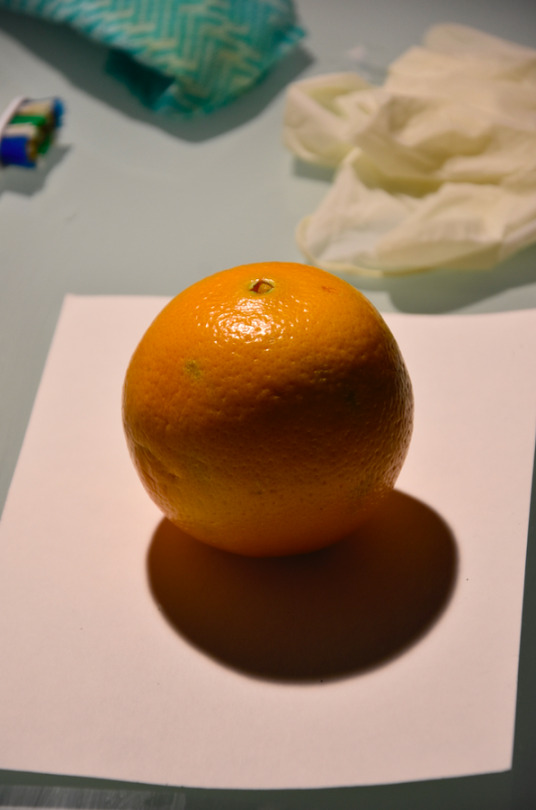
FOG PIECE II
(ORANGE)
Materials: toothbrush, latex gloves, olive oil, salt, kitchen cloth, water.
Writer: Yoko Ono.
Chosen by: Isobel Patmore. Friend.
Like Menard, I allowed myself variants of formal and psychological nature to continue being Ellie Kallmier and arrive at Yoko Ono through the experience Ellie Kallmier. (Levine, altered by me). Polishing the orange I became so absorbed in the act of polishing an orange I forgot why I was doing it. The sound and the smell and the touch were absolute- and only I was there for it. Isobel told me to do what Yoko Ono wrote.
The orange on its own has only the value assigned it by being a fruit. Only when Yoko Ono told me to polish it and I did, did the orange become contextualised and therefore valued as art.

RULES 1
Materials: acrylic paint, paper, string, denim offcuts, chalk pastel, glue, water, plastic. Found objects. Both hands.
Writer: Anna Rienstra. Housemate.
The world is filled to suffocating. Man placed his token on every stone. Every word, every image, is leased and mortgaged. The picture is but a space in which a variety of images, not one of them original, blend and clash. A picture is a tissue of quotations drawn from the innumerable centres of culture. We can only imitate a gesture. (Levine, paraphrasing Barthes).
Completing this work changed how I view my personal practice. I was entirely unable to remove from my thoughts all of the tiny factors that led into making the work, just as art is entirely unable to be made or experienced outside of an ecology. Being given parameters by someone who exists in my immediate community and context, interpreting them through my own experience and working within the framework of the Artworld (using traditional media) layered to facilitate an abstracted experience of collaboration.

WALKING PIECE
Materials: feet.
Writer: Yoko Ono.
Chosen by: Oliver Ashby. Also chose where and when to walk and film. Friend.
Once I take ownership of these actions, they become the materials of my practice. Through this filter, they are in turn nominated and presented as Art. Without the filter they remain what they once were, because it is only through the nomination that they are put forward to be understood, questioned and interpreted as Art. (Ally McGinn, 2017. Paraphrased by me).
The collaborative authorship of these pieces could negate some of the automatic personal associations between author and work; I didn’t let it. By asking people within my personal ecology to provide the rules and structures for the ‘performances’, I aim to deepen connections between myself, the people, the audience and the work.

RULES 2
Materials: black felt tip pen, white acrylic paint. Eyes, hands, toes.
Writer: Bridie Oliver. Friend.
The image of art to be found in contemporary culture is tyrannically centred on the Artist, their person, their history, their tastes, their passions; the explanation of the work is always sought in the man who produced it. To give an Artist to a work is to impose upon that work a stop clause, to furnish it with a final signification, to close the Art. (Barthes, a bit).
I have used the rules that other people gave me to create works both as a critique, and as as a collaboration, to use Levine’s own phrase. (Mandiberg, pieces). This piece is rooted in my traditional practice of sketchy drawing, as dictated by the rules. With a time limit to create the work within I found myself letting go of conscious planning and considered marks, instead letting my hand gesture and record. I, the plagiarist, no longer bore within myself passions, humours, feelings, impressions, but rather this immense void from which I drew. My favourite part was with eyes closed and painting with toes.

PIECES FOR ORCHESTRA
(TEAR, RUB, TOUCH)
Materials: old rag, discarded.
Writer: Yoko Ono
Chosen by: Daisy Skerritt. Housemate.
The viewer is the tablet on which all quotations that make a painting are inscribed without any of them being lost. A painting's meaning lies not in its origin, but in its destination. The birth of the viewer must be at the cost of the painter. (Barthes, Levine).
The rag that features was intentionally discarded by some other artist, who deemed it not Art; it had neither cultural nor economic value in that moment. I picked it up, and tested how my body could respond to it in a physical way, following the steps laid out for me. I felt tied to the feminist associations of textile, and couldn’t shake the history that the material carried as I tore and touched and experienced it.

RULES 3
YOU HAVE TO BE NICE.
Materials: life.
Writer: Laura Meguid.
1 note
·
View note
Photo






ASSESSMENT 3:
PLOT
Repetition is so pervasive in contemporary culture, examples of it can be found in just about everything we experience. It has been described as “the power of beginning and beginning again” [Deleuze, 1994]. It can be used as a tool to strengthen memory, a method of production and reproduction, an aesthetic device, or a mechanism for communication. I have found myself continually fascinated with the concept of repetition and its many functions in art making, especially using it as a “boring” process that leads to surprising results.
Often the more I think about something, the more I repeat the same thought patterns, the more those thoughts shift out of focus and slide into something else. Whilst undertaking the experiments that lead to this final piece, the word “repetition” itself got stuck on loop running through my head, and eventually became so blurred that new patterns started to emerge. Plot is my attempt at communicating an experience of this cycle. It started with drawing lines on a page, that lead to a study of the relationship between paper and what we put onto it; as the lines became unfocused, different waveforms surfaced and sparked a new line of inquiry into natural resonance of materials. In repeating those waves as both literal plots and the formulas that describe them, I was finally able to create these textural, visual responses to what I saw as the interaction between the surface and the subject.
Deleuze, Gilles. Difference and Repetition. Trans. by Paul Patton. London : Athlone Press 1994.
8 notes
·
View notes
Photo

YOU MAKE THIS / I OWN IT
With so many variations on the meaning of “collaboration” in art-making, new distinctions around authorship and ownership are constantly being made. Historically, artistic collaboration was usually when two or more established artists created work together and shared ownership of the piece, and were equally credited. In the contemporary artistic landscape, collaborations can be formed between artist / community, artist / audience, artist / internet, nature / humanity, artwork / audience and more. This era of celebrating artistic partnerships in all forms has prompted and opened space for important discussion surrounding issues around appropriation, community and censorship. Alongside, questions about ownership and authorship are being raised, and as a global community no definitive answers have yet been reached.
Through the process of researching and talking to people about different experiences of collaboration, I found a wide variety of interpretations of “authorship”. One of the things I kept coming back to was the idea of the artist as sole author. In so many artists’ practices, both contemporary and historically, technicians and assistants have been employed to create works, without any mention or credit in the final piece. This practice stretches from Renaissance studios and craft guilds to Andy Warhol, Jeff Koons and Ai Weiwei. Further than this are works that require audience activation, in which viewers become participants and therefore creators of the art itself, leaving the artist as an often distant provoker- for example Erwin Wurm’s ongoing One Minute Sculpture series.
It is this blurring of the line between creator/creation that I wanted to explore through this task. I chose to keep my poster as simple, clear and open as possible, to leave room for the audience to actually make the final work. My hope is that in engaging with the blunt message given, people question and confront this boundary and its definition.
1 note
·
View note
Photo

FINAL WORK - CONCEPT STATEMENT
My final work showcases an organisation of the square shapes that form movement along a path outside the main frame. These shapes follow the concept of ‘thinking outside the box’ and how our imagination needs to be explored deeply in creative ways.
In my first experiment, the ‘motion’ of the 2D box and particular geometric shapes it created, really inspired the way the boxes in my final work are arranged. A box shape was first cut out from a cardboard box, 14x14cm. Each shape was reduced by 1cm to maintain consistency and uniformity. From there, the idea of ‘vagueness’ in experiment three, further conveys how my final work looks minimal and simple. I avoided overdoing my work as I feel it would have moved away from my concept and main purpose. Finally, experiment four and five had many overlapping 2D square shapes, forming optical illusions. This inspired the overlapping and see-through effect in my final work. This ‘see-through’ effect, emphasises ideas of ‘thinking deeper’ or ‘seeing beyond the surface’.
From this assessment, I have been able to understand the benefits of experimentation and reflection, which allow one to gain better insight into what they are creating.
7 notes
·
View notes
Photo



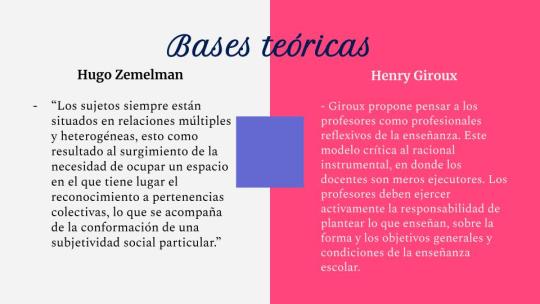
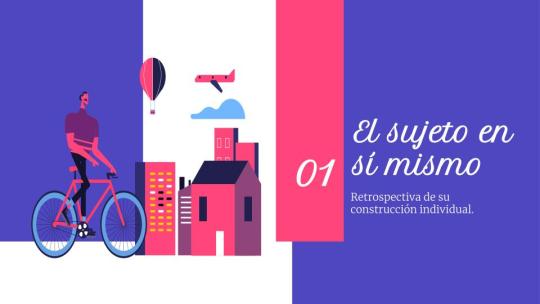
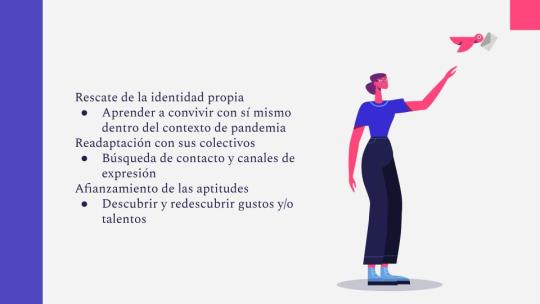


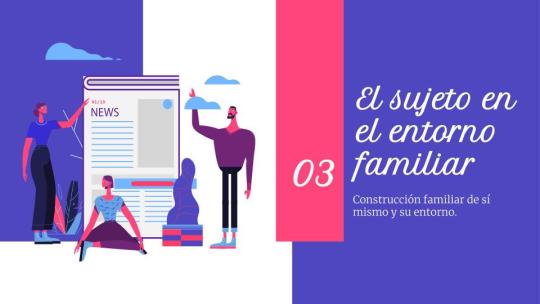
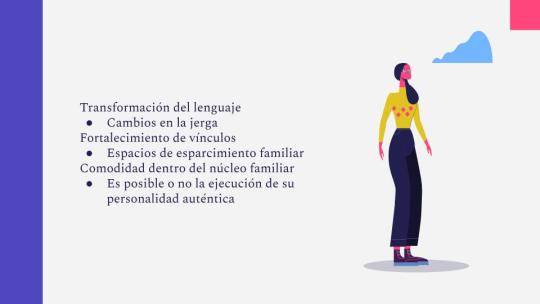
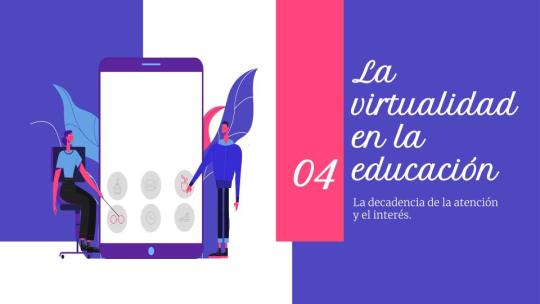
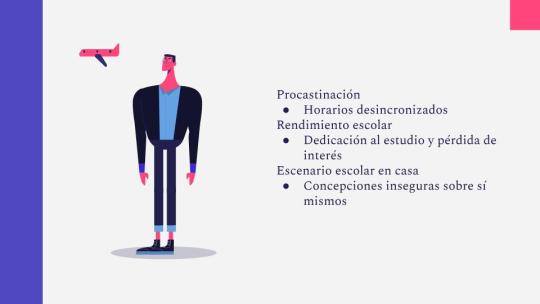

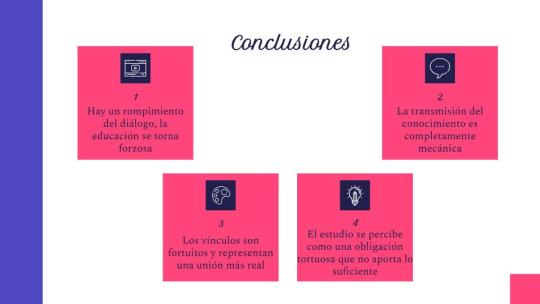
TRABAJO FINAL - EL SUJETO EN LA EDUCACIÓN
1 note
·
View note
Photo






FINAL WORK - STATEMENT
This work evolved slowly through a process of layering, transforming, projecting and editing. It started with a mundane stack of plastic food containers and some perceptions of what a ‘box’ can be; as the physical aspects of those boxes were stripped away and redefined, so were the ideas that contained them. Working with an inquiry-led practice separate from any effort to conceptualise or define an artwork felt unfamiliar, so this process began with some hesitation. However, as each new layer was created and manipulated into something unrecognisable, that caution faded and became excitement to just play, experience and reflect. After playing with some of the ways through which line and colour found in the everyday (plastic food containers) could be manipulated digitally, printing the altered images onto acetate sheets forced them back into physical ‘reality’. Natural light projected the transparent prints onto a crumpled bed-sheet, finally creating these ethereal dreamscapes. This process has generated a new, practice-based approach to art making that pushed me into a world of technology in art that feels uncomfortable and unfamiliar. Only through the continued experimentation with this tension was I able to produce these surreal, abstracted scenes of colour, built from boxes.
4 notes
·
View notes
Photo

/ Final Work + Statement /
Assessment 1: Transformation of a box.
By Judy Liu
What constitutes a box? Is it two dimensional, three dimensional, both or none at all? Most importantly, how do we perceive objects as a box? I carried out initial experiments to identify and understand the characteristics of boxes. Flat surfaces. Bordered with edges. Sharp corners. More accurately, 6 faces, 12 edges and 8 vertices. Although 2D in retrospect, the parallelograms in Excel combined together to trick my eye into seeing illusory 3D cubes. Through the exploration of my initial ideas, I subsequently ventured into experimenting with audio and editing with Audacity, before finally settling down on manipulating photographs into in Adobe Photoshop.
Happy accidents helped fuel my final work. After playing around with a kaleidoscope app and in the midst of examining photos captured around my bedroom, I noticed ‘boxes’ created by the kaleidoscopic manipulations and was extremely excited to pursue this accidentally discovered method.
Boxes were being created out of nothing, everything and anything.
These boxes don’t have the conventional number of faces, edges or vertices. Rather, they appeared as mere hexagonal shapes. However, with closer observation, the lines, colours and shadows of each shape fuse together to appear as a 3D cube. All that’s needed is a little trick of the eye.
2 notes
·
View notes
Video
vimeo
Assessment Task 1, Final Work - “Spiral Box” Process, Part 2:
After completing the first part of the process. I took the “Spiral Box” image onto Microsoft PowerPoint in which I inserted an animation effect onto the image. I recorded the animation (shown above) and using the video, I took a few frames and compiled them chronologically onto GIMP, then converting it into GIF format to create the final work.
Link to video: https://vimeo.com/260732249
2 notes
·
View notes
Photo

最後の卒業制作展覧会が大学にて開催されます。3/9(Fri)-3/11(Sun) 10:00~16:00 『卒業制作展/終了作品展 女子美術大学 女子美術大学短期大学部』@女子美術大学相模原キャンパス 私は8号館4階の845アトリエにて壁面一枚使って7枚展示しています。 久々に7枚並べて見て、やっぱり全部いっぺんに見られるのは良いなと思いました。 写真は昨年12月のプレ展搬入時のもの。みんなのおかげで良い展示ができてたなあ。この写真、好きです。 卒業式も迫ってきて、同時に新生活に向けてもバタバタ。 目まぐるしく3月が過ぎて行く。 #art #painting #finalwork #japan #artuniversity #exhibition
1 note
·
View note